
"The Paper: Ancient Art" and the Shanghai Museum exclusively cooperated to launch a series of reports "70 Years on Bo," this issue focuses on the Shanghai Museum's cultural relics protection technology.
With the development of science and technology, the importance of modern technology in the study of cultural relics has become more and more prominent. There is such a professional team active in the Shanghai Museum. They only speak with data and use advanced scientific instruments to reveal the hidden information of cultural relics, providing strong support for humanistic research. From "thermoluminescence", "X-ray energy dispersive fluorescence instrument" to "microscopic analysis technology", surging journalists explore the ancient ceramic detection "fist" technology of Shangbo Wenbao Technology Center.
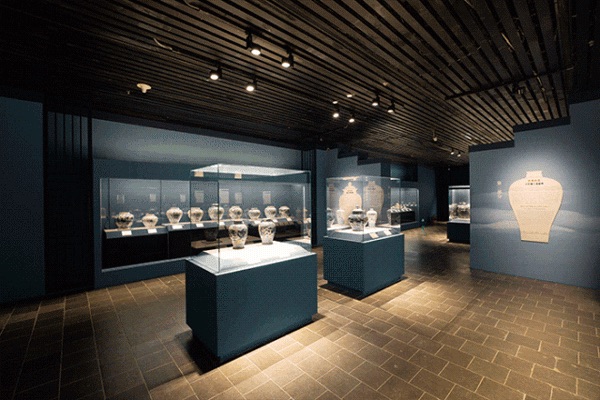
"Brightening Reappearance: Jingdezhen Porcelain Exhibition in the Mid-15th Century" exhibition site
Walking in the exhibition halls of the museum, seeing all kinds of pleasing exhibits, a sense of awe for the cultural relics arises spontaneously: solemn and heavy bronzes, bright and clean porcelain, neat and flat scrolls of calligraphy and painting... The museum displays the cultural relics with "dazzling brilliance" On the one hand, in fact, it also has many lesser-known sides. For example, these cultural relics can also be "sick", and doctors of cultural relics are required to give them "longevity"; there are many hidden information on cultural relics, which requires the help of technology. "Can be better interpreted...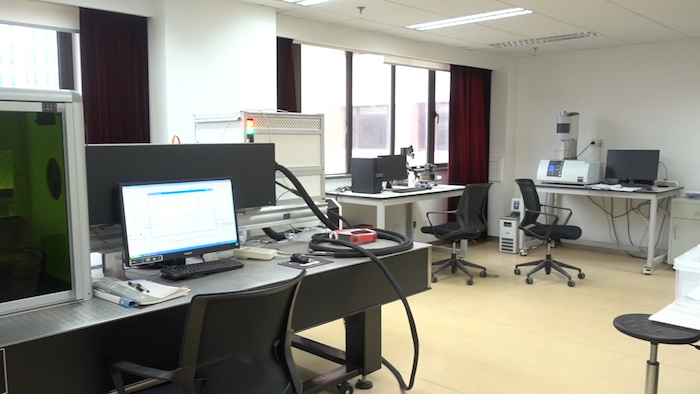
A corner of Shanghai Museum Cultural Relics Protection Technology Center
So, how do these cultural relic researchers use modern scientific instruments to protect and research cultural relics? The surging journalists came to the Cultural Relics Protection Science and Technology Center of the Shanghai Museum to explore the detection technology in the scientific research of ancient ceramics, and saw the well-known "thermoluminescence" and "X-ray energy dispersive fluorescence meter" and other instruments and equipment.It is a professional team of the Cultural Protection Center who use the above-mentioned equipment. They are not only cultural bloggers with humanistic feelings, but also scientific research workers. They only speak with data and use advanced scientific instruments to reveal the hidden information on cultural relics. Humanities research provides strong support.
The Shanghai Museum's cultural preservation technology work started very early. As early as 1958 and 1960, the Shanghai Museum set up a cultural relics restoration workshop and a cultural relics protection laboratory. According to Xiong Yingfei, a research librarian at the center, because of its advanced sense of innovation, Shanghai Bo has carried out a number of national leading scientific research projects very early, and the cultural relics protection laboratory is also one of the earliest laboratories established at the national level. Shangbo first introduced the "thermoluminescence" technology in China, and in 1976, it was able to realize the thermoluminescence dating of ancient ceramics. At present, the Cultural Relics Detection and Analysis Technology Committee of the China Cultural Relics Protection Technology Association, a national first-level society, is also affiliated with the Shanghai Museum.

The manufacturing process of X-ray tomography oil and vinegar bottle
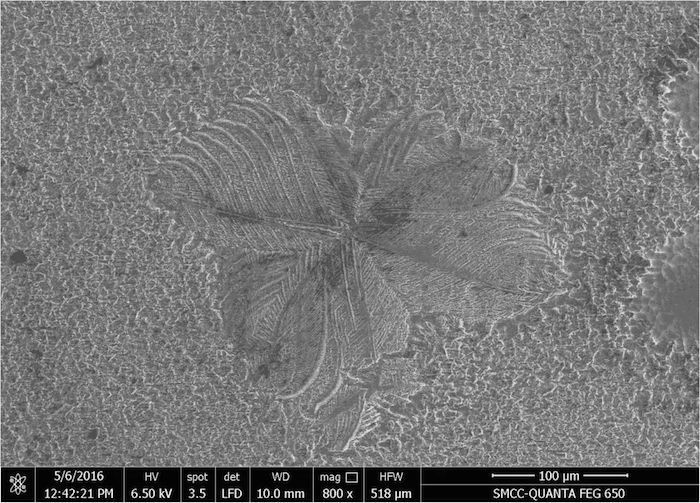
Microstructure of black glaze of Jian kiln in Song Dynasty
The development of Shangbo Wenbao Technology is inseparable from the hard work of the older generation of researchers such as Wang Weida and Tan Derui. "Mr. Wang Weida is our old director. He majored in nuclear physics, so he took the lead in doing thermoluminescence dating; the deputy director, Mr. Tan Derui, has a family background. His father is the famous Mr. Tan Qixiang, and Mrs. Tan is from a foundry major. After the museum, he quickly applied what he had learned to the research on bronze ware making. There are also Mr. Zhu Hongfan and Mr. Chen Yuansheng, who are experts in the protection of inorganic and organic cultural relics respectively. The museum's cultural conservation and scientific research work has laid the foundation." Xiong Yingfei said.In 2015, the Cultural Relics Protection Technology Building on Longwu Road was completed. The Shanghai Museum integrated the cultural relics protection and restoration resources in the museum and established the “Shanghai Museum Cultural Relics Protection Technology Center”. The center is now responsible for the innovation and research of the key scientific research bases of the State Administration of Cultural Heritage, and is endowed with the functions of research and application in the protection of cultural relics, restoration of cultural relics, scientific and technological archaeology, ancient craftsmanship, etc., as well as the editing and publishing of the national core journal "Relics Protection and Archaeological Science".
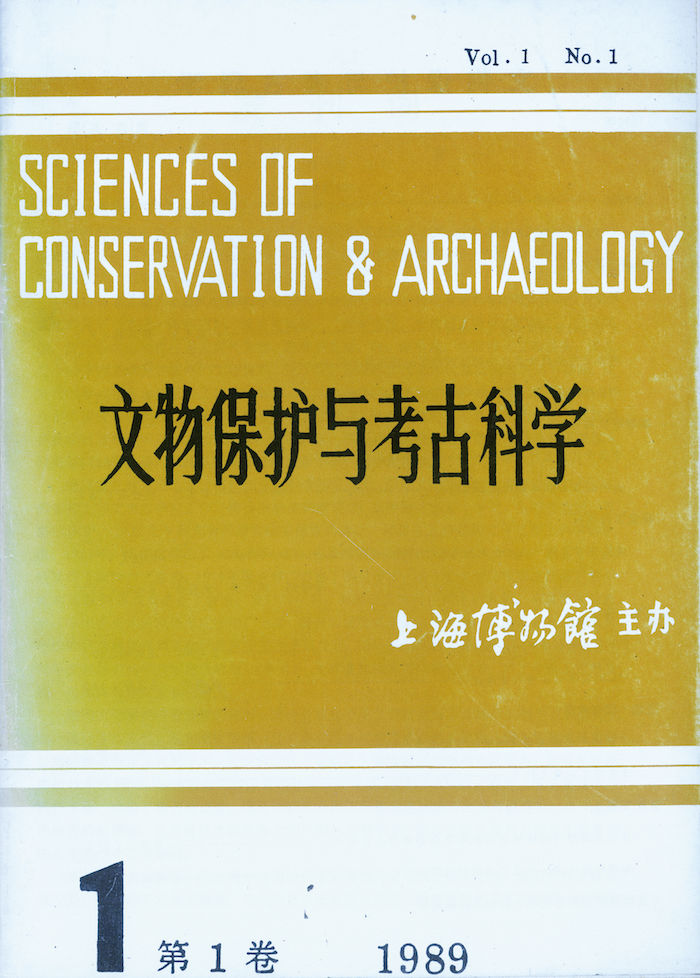
The first issue of "Cultural Relics Conservation and Archaeological Science"
Regarding the "thermoluminescence" and "X-ray energy dispersive fluorometer" and other equipment that the reporter saw at the scene, Xiong Yingfei described them as two "fist" technologies for the detection of Shangbogu ceramics. In addition, the researchers also demonstrated technologies such as laser-induced breakdown spectrometer and scanning electron microscope to The Paper."Thermoluminescence" auxiliary visual inspection, ancient ceramic identification "final decision"
In China, there are many imitations of ancient ceramics handed down from dynasties and dynasties. Shanghai Museum is the first in China to use thermoluminescence age detection technology to assist in the identification of ancient ceramics, and it is very prestigious in the industry.
"Using thermoluminescence for age detection is a very practical technology and a relatively innovative technology." Xiong Yingfei said that the Shanghai Museum has won the Science and Technology Progress Award from the Shanghai Municipal Administration and the State Administration of Cultural Heritage for this technology.
As early as 1975, the Shanghai Museum established a thermoluminescence archaeology laboratory. The first thermoluminescence instrument of Shanghai Museum was developed by the scientific and technical personnel with the support of the museum leaders.
In the 1960s, thermoluminescence technology was first published abroad, used in the field of archaeology, and then developed into the field of geology. "In the 1970s, two seniors from our museum, Wang Weida and Xia Junding, paid attention to this new technology in the world. They believed that it had great application prospects in the field of ancient ceramic identification, and they proposed to the museum leaders to develop this technology." Wu Jingwei, deputy research librarian of the Shanghai Museum, said, "The museum leaders are very supportive and allocated funds, and the research and development and application of thermoluminescence technology has been carried out like this." Foreign literature, went to the electronic market to find accessories for assembly, and made the first thermoluminescence instrument.”
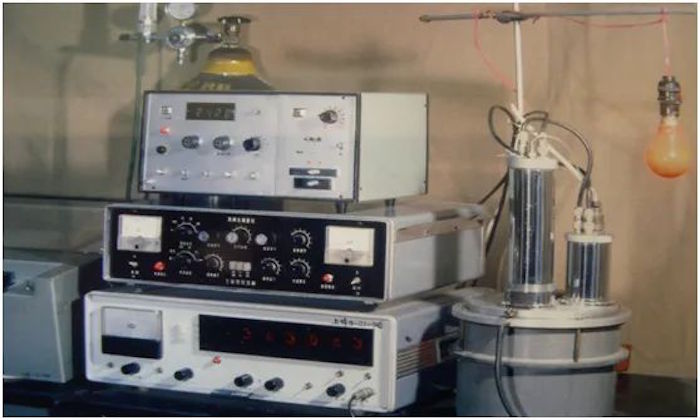
Thermoluminescence instrument (first generation) developed by Shanghai Museum in the late 1970s
The first-generation self-made "thermoluminescence" is very simple and only achieves basic identification, but thanks to its application, it has solved the age attribute problem of some of the more controversial ceramic samples in the industry. For example, in the 1990s, the value of Yuanqinghua was just discovered by the market, and the academic circles did not know enough about Yuanqinghua. Shanghai Bo used thermoluminescence to detect a pair of "Yuanqinghua dragon-patterned blue-and-white elephant ear bottles" sent by foreign collectors for inspection. , the result was judged to be modern production, and finally confirmed to be imitations.The surging news reporter saw the current "thermoluminescence" instrument in the thermoluminescence laboratory of the Cultural Protection Science and Technology Center. The generation of thermoluminescence instruments, imported from Denmark, has been greatly improved in terms of precision and accuracy compared with previous generations.
What is the principle of "thermoluminescence" assisting ancient ceramic age detection? Wu Jingwei introduced that some of the natural minerals contained in the ancient ceramic body glaze have luminescent properties (phosphors), and the radiant energy accumulated in the phosphors is excited by heating, so as to measure the ceramic samples since the last time they were heated. elapsed time.
"The error of sample detection is related to the sensitivity of its thermoluminescence." Wu Jingwei said, "For example, the white porcelain of Jingdezhen and Dingyao has a good thermoluminescence signal of the carcass, and its error is small, about 5%. For example, a sample about 1,000 years ago has an error of plus or minus 50 years; for example, the black porcelain from Jian kiln in Fujian, or the grey tire from Longquan kiln, their thermoluminescence signal is not so good, and the error will reach 10% - 15%."

The thermoluminescence test system of the Danish RISO National Laboratory currently used by the Shanghai Museum
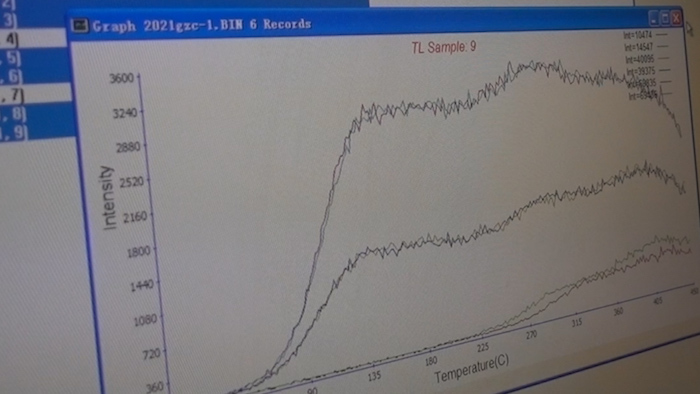
By analyzing and correcting the map, we can understand the production age of ceramics
In 2014, the Shanghai Museum used thermoluminescence technology to assist the Zhejiang Provincial Public Security Department and the Zhejiang Provincial Bureau of Cultural Relics in cracking a tomb robbery case. The reason for this case is that the authenticity and value of the cultural relics involved the sentencing of the tomb robbers. However, cultural relic experts disagreed on the dating of the stolen bronze tripod. Fan did thermoluminescence dating and confirmed the age as Song, solving a mystery. In addition, the Shanghai Museum has also used thermoluminescence detection technology to test the pottery fan, Yuanqinghua, Ru kiln, etc. unearthed from the Sanxingdui site.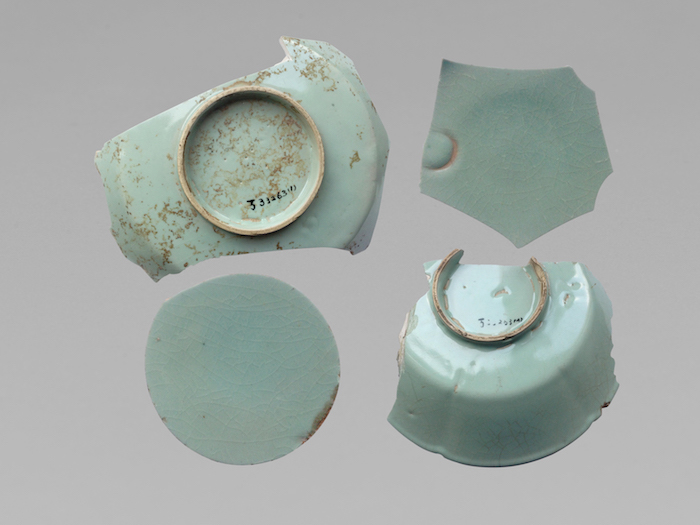
Celadon specimens unearthed in Kaifeng and collected by Shanghai Museum
Xiong Yingfei said, "The Shanghai Museum is characterized by its profound humanistic research. If it is assisted by scientific and technological means and scientific and technological data to support the appraisal conclusion, many of the appraisals can be finalized."Over the years, the Shanghai Museum has undertaken the task of dating the ceramics unearthed in many places in China, and has now become a well-known authority on the thermoluminescence dating of ancient ceramics at home and abroad.
Non-destructive testing technology reveals the mystery of color porcelain
However, the thermoluminescence age detection technology also has limitations. It is a destructive analysis, and it is necessary to sample the samples during application, so it is difficult to apply it to some precious ancient ceramic complete devices. In the 1990s, Shangbo Wenbao Technology Center moved towards non-destructive analysis technology. In 1997, Shanghai Bo introduced the first X-ray energy dispersive fluorescence instrument and applied it to the detection of ancient ceramic integrity devices. This technology has also become one of the leading core technologies of the Shanghai Museum in China.
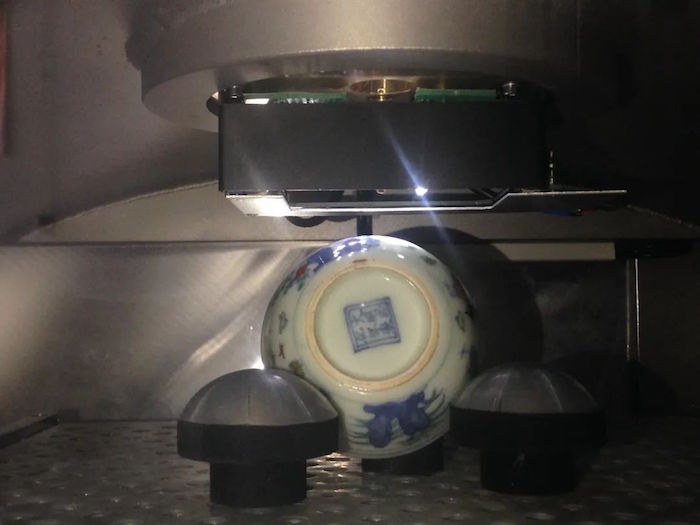
X-ray fluorescence analysis of colored porcelain
"The X-ray energy dispersive fluorometer can establish a database of ancient ceramics through the non-destructive testing and analysis of the complete device." Xiong Yingfei took the red-glazed color porcelain in the collection as an example. For example, the red-glazed color porcelain recorded in Chinese historical books has various and complicated names, which are roughly as follows: " Langyao Red, Bull Blood Red, Sacrificial Red, Bright Red, Jihong, Cowpea Red, Junhong, Coral Red, Rose Red Glaze; "Red in the glaze", "Baoyao glaze", "Filling red", "baby face", "peach blossom slices", "carmine", "rouge water", "magenta", "pink", etc. What are the differences between these red-colored glazed porcelains? ? With the help of X-ray fluorescence spectroscopy, a non-destructive testing technique, the color mystery of red-glazed colored porcelain can be discovered.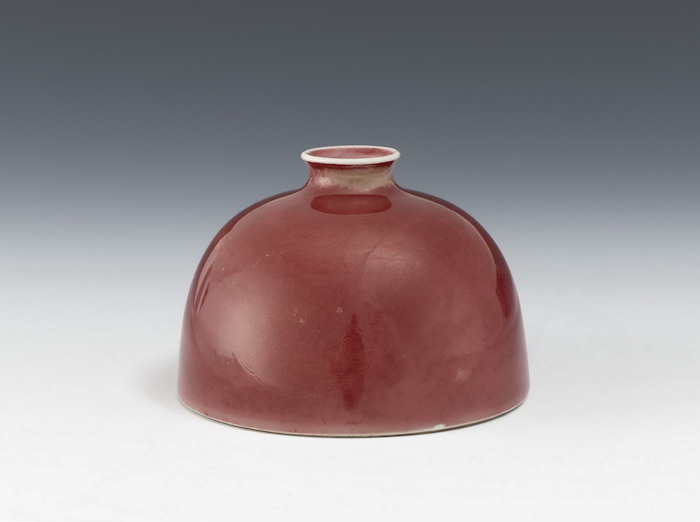
Qing Kangxi Jingdezhen Kiln Cowpea Red Taibai Zun Collection of Shanghai Museum

Elemental analysis of red glaze color
"These different ancient ceramic red glaze colors can be classified into four categories according to color elements: iron red, copper red, golden red and a rare 'lacquer red' color with cinnabar; The proportion and production process of the red glaze determine the rich color of the red glaze, which also produces the above-mentioned famous red glaze porcelain with different colors." Xiong Yingfei said.Through the analysis of the chemical composition of the artifacts and the humanities research, the authenticity of the cultural relics can be assisted. For example, through the classification and analysis of the above-mentioned red-glazed colored porcelain and the establishment of a database, those beyond the scope of the specimen may be imitations.
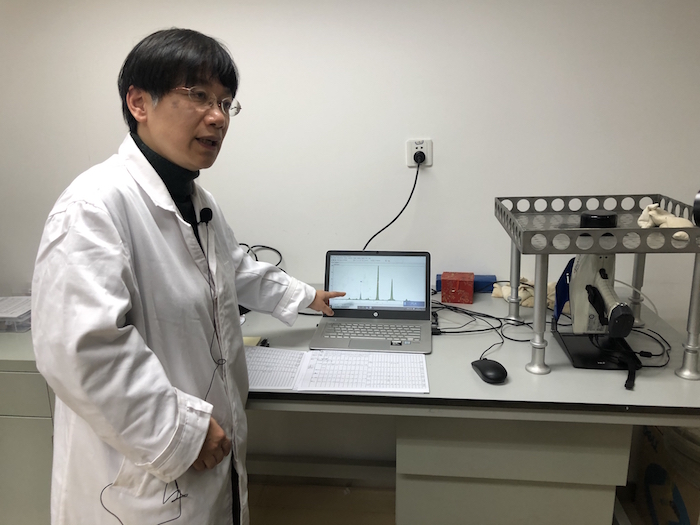
Research librarian Xiong Yingfei introduced the green color composition analysis map on the multicolored cans
The laboratory is currently analyzing the composition of the green color on a multicolored can listed in the East Hall. It can be seen from the map that the green color is fired at a low temperature and contains relatively high lead. Since the green color in the color is added with copper pigments, the valleys and peaks of copper can be clearly seen. Xiong Yingfei also mentioned, "Because the ancient pigments are relatively pure and have no other materials mixed with them, if a high amount of chromium or zinc is found, it can be judged as a modern imitation." Xiong Yingfei also emphasized that with the assistance of technology In the process of identification, it is also necessary to pay attention to "a single piece of evidence is not evidence, and multiple pieces of evidence are needed to support it".
The green color on the multicolored pot is used for composition analysis
The beauty of blue and white under high magnification
Scanning Electron Microscope System
With the development of science and technology, more analytical methods are applied to the research, protection and utilization of ancient ceramics. For example, the morphology of the artifacts is analyzed by microscopic analysis technology. In the microscope room, the researchers showed us the different shapes of the blue and white pigments of the blue-and-white porcelain made in Xuande and the later-added blue-and-white porcelain under the magnification of 50 times. The blue and white made in Xuande years have dense bubbles like fish roe, while the blue and white bubbles on the imitation Xuande porcelain are dense and have brown or dark purple stains. Usually, the blue and white pigments have high manganese content. The stains indicate that the blue-and-white colorant imitated later contains high manganese elements, while the blue-and-white manganese content of Xuande is not so high. Under the magnification of 150 times, it can be more clearly seen that the method of glazing and firing of the glaze layer are different. "It is also the materials and processes that determine the difference in the shape of its bubbles." Xiong Yingfei said, "Through microscopic analysis technology, scientific researchers can observe the more microscopic appearance of the ceramic body glaze, the use of ancient ceramic raw materials, glaze color A clearer understanding of its formation mechanism can also assist in the identification of ceramics."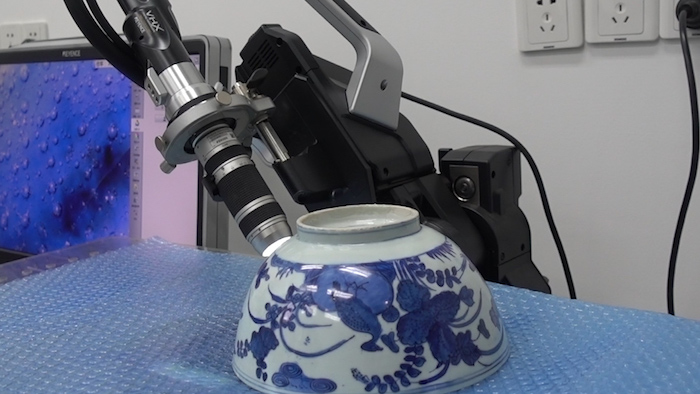
Morphology analysis of objects using microscope

Blue and white porcelain made in Xuande year showing air bubbles under the microscope
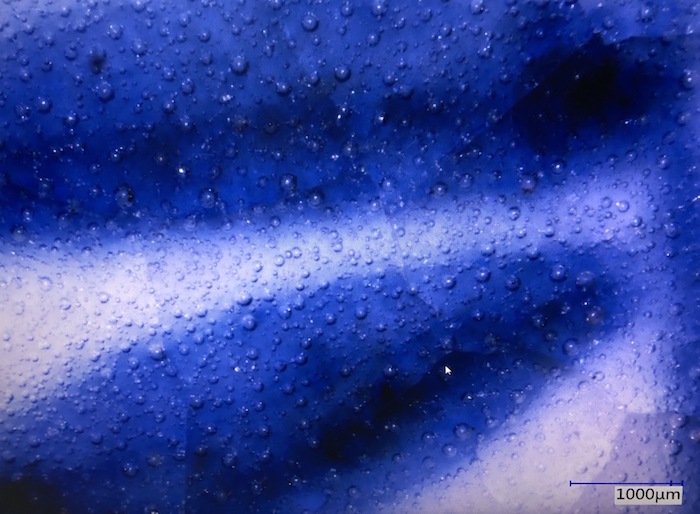
Air bubbles displayed under the microscope on imitation Xuande blue-and-white porcelain
In addition, with the help of X-ray tomography, the internal production details of ancient ceramics can be presented, and the molding process of ancient ceramics can be directly depicted. Research on ancient firing techniques provides scientific data.
computed tomography scanner
Xiong Yingfei said that with the help of the "eyes" of modern technology, cultural relics can be seen more clearly and thoroughly, revealing some invisible information contained in cultural relics from different angles, such as microscopic structure, physical properties, etc., scientific understanding of ancient ceramics Physicochemical basis and formation mechanism.
General microstructure of copper red glaze
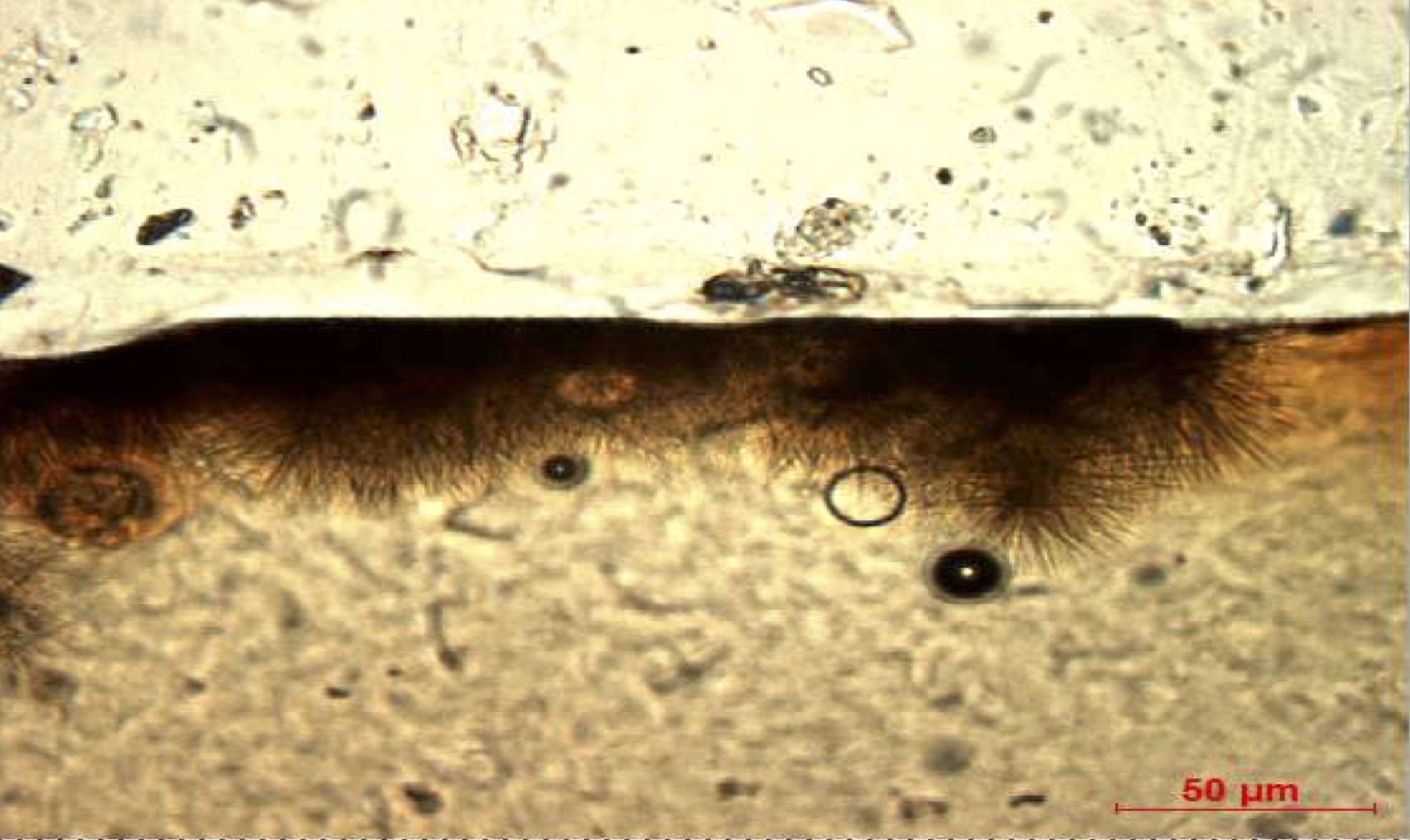
Upper glaze 500 times single polarized light (black glaze)
"In the past, we focused on the humanistic research of cultural relics. With the development of science and technology, the instruments and equipment have also progressed from loss to loss, and the importance of modern technology in the study of cultural relics has become more and more prominent. Humanities departments, or auxiliary identification, often have the participation of our scientific researchers, the purpose is to better restore the history and reveal the scientific value of the cultural relics themselves."